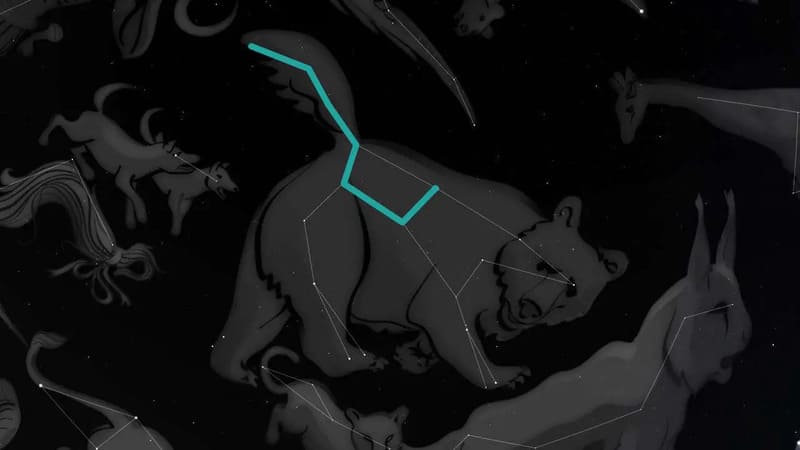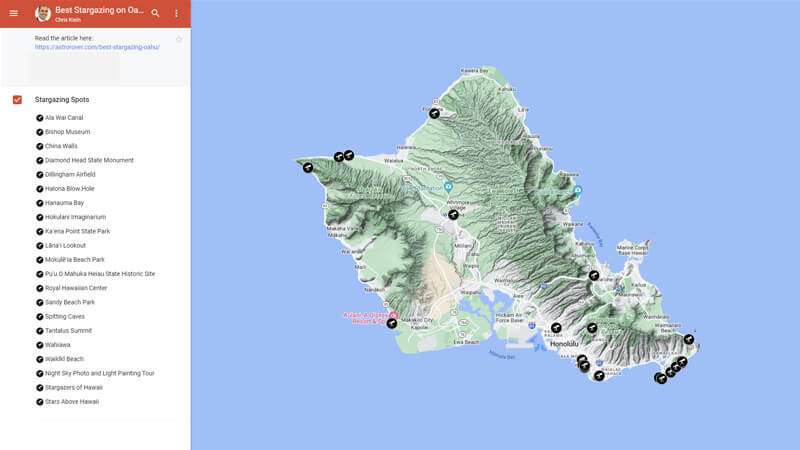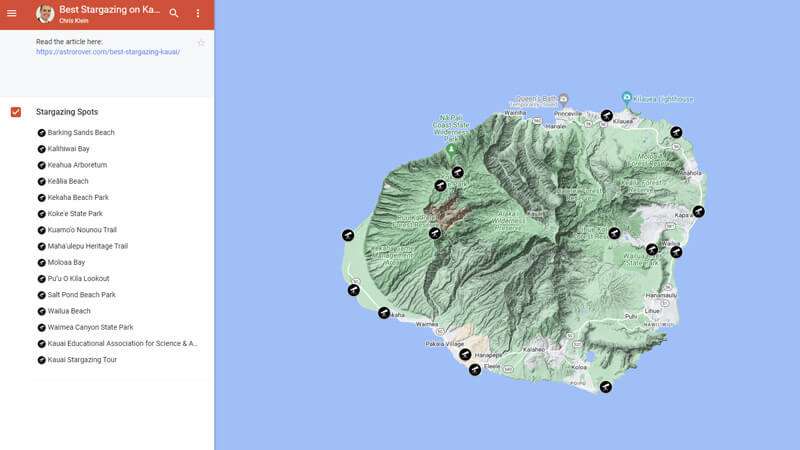Can you see the Big Dipper in Hawaii? Absolutely! In this article, I’ll guide you on how to spot the famous big dipper constellation in the Hawaiian skies. Your location in Hawaii provides a unique advantage for stargazing, as it allows you to see both the Big Dipper and the Southern Cross. So grab your telescope or gaze up at the night sky, and you’ll soon be able to find the Big Dipper constellation easily.
First, let me give you some background on the Big Dipper. It is a group of stars in the constellation Ursa Major, also known as the Great Bear. The Big Dipper is easily recognizable due to its distinct shape, often described as a ladle or a cart. You might even be reminded of a shopping cart or a big soup spoon turning in the sky when you see it!
Now that you have some context on the Big Dipper, let’s explore how to spot it from Hawaii. Let’s call it the Big Dipper Hawaii. As I mentioned, you’re in an excellent location to see it. You have to look toward the northern half of the sky, perhaps even slightly overhead, and you’ll find it with little difficulty.
Once you’ve spotted the Big Dipper, here’s a tip: the two stars forming the outer edge of its bowl can help you locate the North Star, a handy reference point for navigation and a fascinating star to observe on its own.
In this article, you get
A close look at the Big Dipper and other constellations in Hawaii
Tips on how and where to look to see the Big Dipper and North Star from Hawaii
Top stargazing spots in the Hawaiian Islands to see the Big Dipper, Milky Way, and maybe even a Meteor Shower
Mythology and cultural significance of the Big Dipper
Answers to frequently asked questions about the Big Dipper in Hawaii
By the end of this article, you’ll have all the info you need to observe the Big Dipper in Hawaii and stargaze on the islands.
Let’s dive right in.
Recommended For You
The Big Dipper: An Overview

Asterism vs. Constellation
When you gaze at the night sky, knowing the difference between an asterism and a constellation is essential. The Big Dipper is an example of an asterism, a series of stars resembling a pattern or shape. It has seven bright stars within the larger Ursa Major (the Great Bear) constellation.
On the other hand, constellations are defined regions of the sky containing specific groups of stars.
Knowing this distinction will help you become a better stargazer and understand where to find the Big Dipper in relation to the night sky.
Role in Navigation
The Big Dipper has played a crucial role in navigation for centuries. Two of its stars, Merak and Dubhe, form a line pointing towards the North Star. Polaris is a bright star and part of the Little Dipper. You can quickly determine your location and direction by finding the Big Dipper.
Polaris, the North Star, stays virtually fixed in the sky while everything else appears to revolve around it. Polaris is almost directly above Earth’s North Pole. Thanks to the North Star, navigators and stargazers alike have found their way for generations, whether sailing the oceans or taking a late-night walk in their backyard.
Where and When Can you see the Big Dipper in Hawaii?

When you’re in Hawaii, you might wonder if you can glimpse the famous Big Dipper. Rest assured, it’s possible! Let’s review what you need to know to witness this celestial beauty.
Visibility and Location
Where is the Big Dipper?
First, you’ll want to look towards the northern sky. Tilt your head at about a 60-degree angle since the Big Dipper is visible in the Northern Hemisphere. If you’re having trouble spotting it, use a magnetic compass or a map to identify the correct direction.
Best Times of the Year
For the best visibility, aim for the midsummer and autumn months. During these times, the Big Dipper will be closer to the horizon but still easily visible. Adjust your gaze accordingly, as it won’t be as high up in the sky as in other seasons.
FREE STARGAZING CHECKLIST
My 5-page Stargazing Checklist will enhance your astronomical observations.
Follow this free checklist to navigate the night sky with confidence, clarity, and a sense of preparedness for a rewarding stargazing experience.

Top Stargazing Spots in Hawaii
Now that you know when and where to look, let me share my favorite stargazing spots in Hawaii for observing the Big Dipper with the naked eye:
Haleakala Summit (Maui)
This dormant volcano offers an epic setting that’ll make your stargazing experience unforgettable.
For all 13 amazing and free stargazing spots, and a Google Map, read my article on the best stargazing on Maui.

Lanai Lookout (Oahu)
Not only can you spot the Big Dipper here, but you might even catch a glimpse of the Southern Cross on clear nights.
For the 21 best stargazing spots, and a free Google Map, read my article on the best stargazing on Oahu.

Be sure to also check out my article on the frequently asked question, “Can you visit the observatory on Oahu?“
PU’U O KILA LOOKOUT (Kauai)
This spot is one of the best stargazing spots on Kauai. It offers a fantastic view of the stars and the Milky Way. From here, you can ponder what’s at the center of the Milky Way.
For all 15 great spots, and a free Google Map, read my article on the best stargazing on Kauai.

With these tips, you can embark on your Hawaiian stargazing adventure.
The Larger Context: Ursa Major
Before diving deeper into observing the Big Dipper in Hawaii, let’s look at the larger context – Ursa Major, the constellation containing the Big Dipper.
Mythology
Ursa Major has several stories associated with it across different cultures.
In Greek mythology, the constellation represents Callisto, a beautiful nymph transformed into a bear by the jealous Hera and later placed among the stars by Zeus.
I don’t know about you, but the idea of turning someone into a bear seems extreme – talk about a grizzly situation!
Key Stars and Objects
Ursa Major includes many bright stars and objects that might catch your eye. For example, Mizar and Alcor are two stars in the Big Dipper’s handle that appear close together, but they’re a fascinating double-star system!
What does the Big Dipper look like?
In the Big Dipper, you can find seven bright stars. They Big Dipper stars form a pattern that resembles a ladle or a large dipping spoon. Dubhe, Merak, Phecda, and Megrez make up the bowl, while Alioth, Mizar, and Alkaid form the handle.
If you’re starting to explore astronomy, using the Big Dipper as a reference point can be a great way to locate other constellations and objects in the sky.
Big Dipper vs Little Dipper
The Little Dipper and Big Dipper are two of the most recognizable patterns in the night sky. They have been a source of fascination and inspiration for many cultures throughout history.
They’re part of larger constellations: the Big Dipper belongs to Ursa Major, and the Little Dipper to Ursa Minor. Which Dipper has the North Star? The Little Dipper.
Where is the the Little Dipper in relation to the Big Dipper?
- Head outside on a clear night, preferably away from city lights.
- First, find the Big Dipper by looking for its distinct “bowl-and-handle” shape.
- Follow the two outer stars in the bowl toward Polaris, and you’ll discover the Little Dipper.
Now that you better understand Ursa Major and the Big Dipper, and Little Dipper vs Big Dipper, you’ll be better prepared to search for it in the Hawaiian sky.
Remember, the stars are always there, waiting for you to look up and explore the universe’s wonders!
Other Prominent Hawaiian Constellations
Aside from the Big Dipper, there are other constellations visible in Hawaii. You can admire them while stargazing the Hawaii night sky. Let’s explore their naval starlines and cultural significance.
Naval Starlines
In Hawaii, wayfinding has always been an essential part of life. The ancient Hawaiians relied on something other than modern navigation tools. They used the stars above to guide them across the Pacific Ocean. Four principal star families, known as Nā ʻOhana Hōkū ʻEhā, helped them navigate effectively.
To help you understand the night sky, imagine it divided into four segments, each hosting a group of bright stars or constellations. Knowing these star groupings can be beneficial in pinpointing other essential constellations and stars while you’re in Hawaii. For example, locating Aʻa (Sirius) will help you find the Little Dipper, which has Hōkū-paʻa (Polaris) at the top.
Cultural Significance
Hawaiian constellations bear great cultural and historical value. With names such as Kaiwikuamoʻo (the Big Dipper), Nāhiku, Hōkūleʻa, Hikianalia, and Hānaiakamalama (the Southern Cross), these celestial bodies serve as reminders of Hawaii’s wayfinding past.
Each has a unique role in navigation and a story to tell. For instance, sailors once located Hikianalia by following the arc of Nāhiku to Hōkūleʻa, passing through Meʻe, and then dropping straight down to Hānaiakamalama.
While stargazing in Hawaii, remember to appreciate the beauty of the stars and understand their significance to Hawaiian culture!
Grab a pair of binoculars or a telescope, gather your friends, and enjoy the celestial show the clear Hawaiian night sky offers. You might even surprise your friends with your newfound astronomical knowledge!
Stargazing Tips & Etiquette
Best Practices
When stargazing in Hawaii, find a high-elevation spot with clear skies to avoid light pollution. Bring a cozy blanket or sleeping bag to stay warm and comfortable. Opt for non-alcoholic beverages, as alcohol can impair your night vision.
Use a star wheel or stargazing app to help you identify constellations quickly. Visit popular dark skies stargazing spots like Mauna Kea or Mauna Loa for an unforgettable experience.
Respecting Hawaiian Culture
Hawaii is home to sacred sites and rich cultural beliefs. When stargazing, be mindful of the environment and quiet, respecting local customs and beliefs. Avoid touching or disturbing religious structures, and follow posted signs and guidelines.
Remember to be courteous to others enjoying the night sky, and help preserve the pristine beauty of Hawaii for future generations of stargazers.
Frequently Asked Questions
Is the Big Dipper always north?
The Big Dipper is only sometimes north. However, it is a helpful tool for finding the north, especially for people unfamiliar with the night sky.
The two stars at the end of the bowl of the Big Dipper point towards the North Star, which is located almost directly above the Earth’s North Pole. By following these stars, you can determine which direction is north.
Is it rare to see the Big Dipper?
No, it is not rare to see the Big Dipper. It is one of the most recognizable constellations in the night sky and can be seen throughout the year in the northern hemisphere. However, its visibility may be affected by light pollution and weather conditions. If you live in an area with a lot of light pollution, you may need to travel to a darker location to see the Big Dipper.
Why is Hawaii good for stargazing?
Hawaii is good for stargazing because it has some of the clearest skies in the world. The islands are in the middle of the Pacific Ocean, far away from major cities and sources of light pollution.
This means that the night sky is very dark, and you can see many stars and constellations that are not visible in other parts of the world. Hawaii also has several observatories and astronomy centers that offer guided stargazing tours and educational programs.
Can I see the North Star from Hawaii?
Yes, you can see the North Star from Hawaii. The North Star, known as Polaris, is almost directly above the Earth’s North Pole. You can see it anywhere in the northern hemisphere.
However, its position in the sky may vary depending on your location. The North Star is relatively low on the horizon in Hawaii, so it may be harder to see if tall buildings or trees surround you. To get the best view of the North Star, you should find a location with an unobstructed view of the northern horizon.
Can you see the stars in Honolulu?
You can see the stars in Honolulu, but light pollution may affect visibility. Honolulu is a large city with many artificial light sources, such as streetlights and buildings. This can make it harder to see stars and constellations, especially if you are in the downtown area.
However, several parks and beaches in Honolulu offer darker skies and better stargazing conditions. You can also visit the Bishop Museum or the University of Hawaii’s Institute for Astronomy to learn more about the stars and planets.
Summary: Big Dipper Hawaii
Thank you for reading my article “Can You See the Big Dipper in Hawaii?” Seeing the Big Dipper in Hawaii might be a highlight of your stargazing experience.
You can spot its most recognizable feature by looking for the famous constellation Ursa Major. Remember, the stars shine brighter on clear nights, so pick your stargazing timetable wisely.
Hawaii offers a unique opportunity to spot the Big Dipper and the Southern Cross! Keep going if the Big Dipper appears lower in the sky than in other locations. As you learn more about the night sky, you’ll discover other fascinating stars and constellations waiting to be explored.
To enhance your stargazing experience, consider visiting some renowned astronomy spots around the island. You may even become an amateur astronomer.
So, grab a blanket, a star chart, or an astronomy app to help you navigate the night sky, and head to a dark place away from city lights. You’ll be impressed by the celestial wonders that await you in Hawaii’s beautiful skies.
Happy stargazing, my friend! Remember to share your experience with your loved ones! After all, stargazing is always more enjoyable when shared.




